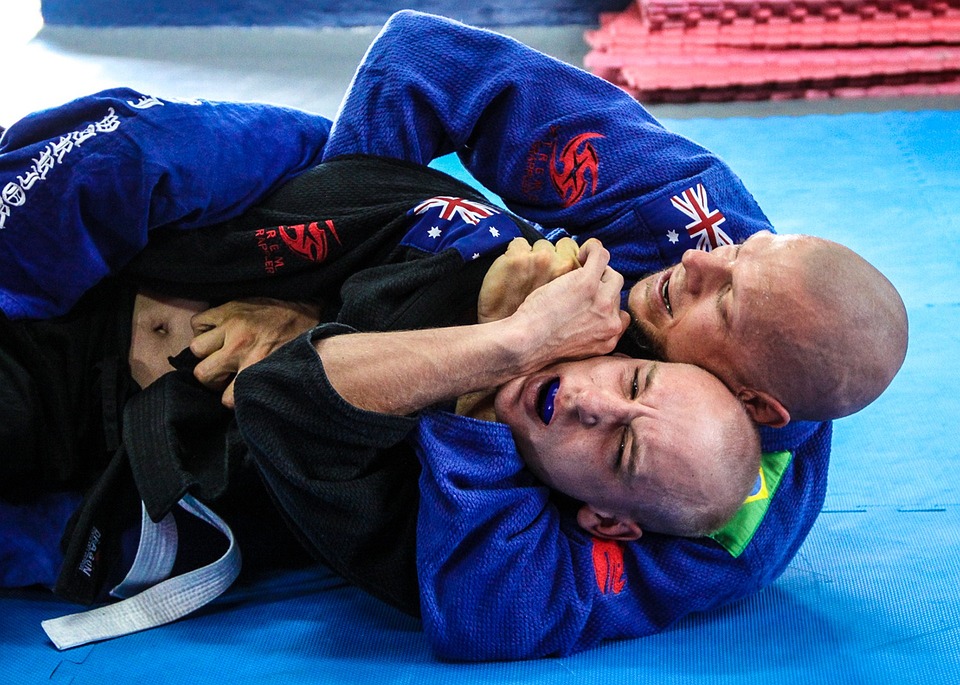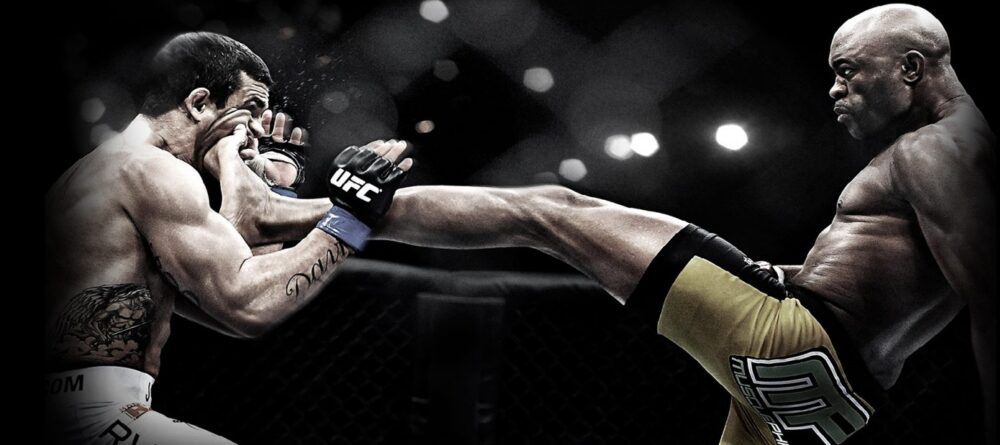Jiu Jitsu is a Japanese martial arts that dates back to the 1530s. Today it is practiced by millions of people around the world, and that’s mainly due to the popularization of it by the Brazilian fighters.
But how did jiu jitsu arrive in Brazil? How did Brazilian fighters popularize this ancient martial arts all over the world? This article will answer these questions as well as go into the history of jiu jitsu.
Who Invented Japanese Jiu-Jitsu?
Hisamori Tenenouchi, who formally founded the first jiu-jitsu school in Japan, invented the term “jiu-jitsu” in the 1530s.
This style of martial arts employs blows, throws, grips, and paralyzing techniques on the opposition while using little to no weapons.
Shoulder Lock Submission From Mount
How Did Jiu Jitsu Arrive In Brazil?
Jiu Jitsu arrived in Brazil in 1914 with a man named Mitsyuo Maeda. Maeda was a proficient jiu-jitsu fighter who traveled the world giving “jiu-do” demonstrations, and accepting challenges from wrestlers, boxers, savate fighters, and various other martial artists.
While Maeda was traveling in Brazil he met brothers Carlos and Helio Gracie who wanted to study under him. The Gracie brothers were intrigued by one of Mitsyuo’s jiu jitsu presentations and they immediately wanted to learn.
Helio and Carlos learned the techniques of jiu-jitsu and honed their skills over many years while teaching it to their family and others.

Who Is The Gracie Family In Jiu-Jitsu?
Carlos Gracie, the original creator of Brazilian Jiu-Jitsu, was the first member of the family to learn judo from the legendary Mitsuyo Maeda.
Gasto Gracie, who was a third generation Scotsman, gave birth to Carlos, the first member of the Gracie family.
Carlos ultimately went on to establish the first Gracie Jiu-Jitsu Academy and was the first member of the Gracie family to launch the “Gracie Challenge,” in which he invited other martial artists to compete against him so that he could hone the technique of Brazilian Jiu-Jitsu.
Carlos would have a total of 21 children, and they would carry on their father’s legacy by teaching Brazilian Jiu-Jitsu and helping it develop into the modern martial art it is today.
The Gracie Jiu Jitsu Philosophy
The Gracie mentality extends beyond the straightforward submission of adversaries. The Gracie concept equips practitioners with the skills necessary to lead healthy lives and make the most of their bodies and minds.
The idea encourages leading a life devoid of drugs, alcohol, and tobacco. The reason for this is because maintaining a healthy physique is essential to excelling in jiu jitsu.
In accordance with the family’s ideology, maintaining relationships with loved ones and close friends is essential since it helps practitioners grow mentally and spiritually.
The founders of Brazilian jiu-jitsu (BJJ), Grand Masters Carlos and Hélio Gracie, created jiu jitsu as a way of life.
Gracie Family First and Second Generation
- Carlos Gracie Sr.
- Gastão Gracie Jr. Jorge (George) Gracie
- Hélio Gracie
- Oswaldo Gracie
- Carley Gracie
- Carlos Gracie Jr.
- Crolin Gracie
- Carlson Gracie
- Rilion Gracie
- Relson Gracie
- Reyson Gracie
- Rickson Gracie
- Robin Gracie
- Robin Gracie
- Rocian Gracie
- Rolker Gracie
- Rolls Gracie
- Rorion Gracie
- Royce Gracie
- Royler Gracie
What Is Gracie Jiu Jitsu?
Gracie Jiu-Jitsu has many similarities to Brazilian Jiu-Jitsu, but there are also some differences.
Regardless of age, height, gender, or level of fitness, Gracie Jiu Jitsu seeks to educate everyone on how to defend themselves against a bigger and stronger opponent.
The same methods are used in Brazilian Jiu Jitsu except BJJ is more suited to the sport of grappling.
Can you use Brazilian Jiu Jitsu in a street fight? Yes you can, but the moves are taught with sport in mind not street fighting in mind. Gracie Jiu Jitsu teaches you self defense so you can protect yourself in a street fight.
Barbo Choke Jiu Jitsu Submission
Who Is the Best Gracie Jiu-jitsu fighter?
In 2003 Reyson Gracie received the 9th degree of the red belt, the highest active black belt rank in Gracie Brazilian jiu-jitsu and one that is virtually unachievable.
He had dedicated himself entirely to studying Jiu Jitsu techniques. Jiu Jitsu became the most widely practiced martial art in the Brazilian states of Amazonas, Hives, and Bahia thanks to Reyson Gracie.
He spared no effort in training the best jiu-jitsu competitors, who went on to win World Championships and gain the utmost respect for their teacher Reyson Gracie.
How Do Jiu Jitsu Belts Work?
In the simplest terms, belts represent rank and skill level. White belts stand for beginners in jiu-jitsu. They receive new belts as they advance as fighters and show off their improved ability on the mat.
It gets harder to get additional belts or, for black belts, degrees in addition to displaying superior technique and more expertise.
Order of Belts In Jiu Jitsu
- White belt: Beginner
- Blue belt: Student
- Purple belt: Intermediate
- Brown belt: Advanced-intermediate
- Black belt: Expert
- Red Belt
The BJJ belt rankings have five levels each. A belt with a single solid color is given to you as you advance in Brazilian Jiu-Jitsu belts.
You get each of your four stripes over time. Each stripes you receive as a BJJ student represents a new level you have accomplished.
You move on to the following Brazilian Jiu-Jitsu belt once you’ve earned all four stripes!

Is Brazilian Jiu-Jitsu Just Grappling?
Yes, Brazilian Jiu Jitsu is a martial arts based on grappling and ground moves. The grappling includes holds, chokes, ties, and many other submission moves.
Brazilian Jiu Jitsu does not have any punches or kicks because it is predominately a martial arts that takes place on the ground.
The reason being is that this type of martial arts was created to defend yourself on the ground. The thought behind this is that they say 90% of fights end up on the ground.
Is this true? Not entirely. I’ve seen many street fights that didn’t go to the ground. I’ve been in a few that didn’t either. But it’s still good to know how to fight on the ground just incase it happens.
Martial Arts Can Keep You Healthy
Why Is Jiu-Jitsu So Popular?
One of the main reasons BJJ is so well-liked across the world is the self-confidence that comes with the hours you will spend on the mat learning how to defend yourself on the ground.
One of Brazilian jiu-Jitsu’s most notable advantages is self-defense, which also contributes significantly to the sport’s rising popularity.
When you ask BJJ practitioners why they train in BJJ they will typically cite self-defense as their main motivation. And this response is not at all incorrect. A close second reason would be for fitness.
The BJJ tenets are similar in that they can be used in everyday life. Jiu-Jitsu, for instance, teaches fighters values like maximizing effectiveness with minimal effort, not putting things off until later, and seizing opportunities.
And these ideas work well to resolve issues in daily life. Always remember that martial arts is not only used for self defense, it also encourages mental wellness, spiritual upliftment, nutrition and physical health.
How Dangerous is The Heel Hook?
Is Brazilian Jiu-Jitsu Good For Street Fighting?
Some aspects of Brazilian Jui-Jitsu is useful in street fights like the grappling, defense, and submissions. But keep in mind that Brazilian Jiu-Jitsu is primarily for sport.
Brazilian Jiu-Jitsu is mostly for ground fighting and doesn’t teach defense against kicking, kneeing, punching etc.
It’s main focus is how to defend yourself when you’re on the ground. The majority of Brazilian Jiu-Jitsu systems do not teach you how to defend against punches while on the ground.
The reason being is because the sport of BJJ does not allow you to throw punches, so it can’t prepare you how to throw or block punches on the ground.
The best Jiu-Jitsu to use for self defense in a street fight is Gracie Jiu-Jitsu or Japanese Jiu Jitsu.
Sponsor: Salvosa Jiu-Jitsu
